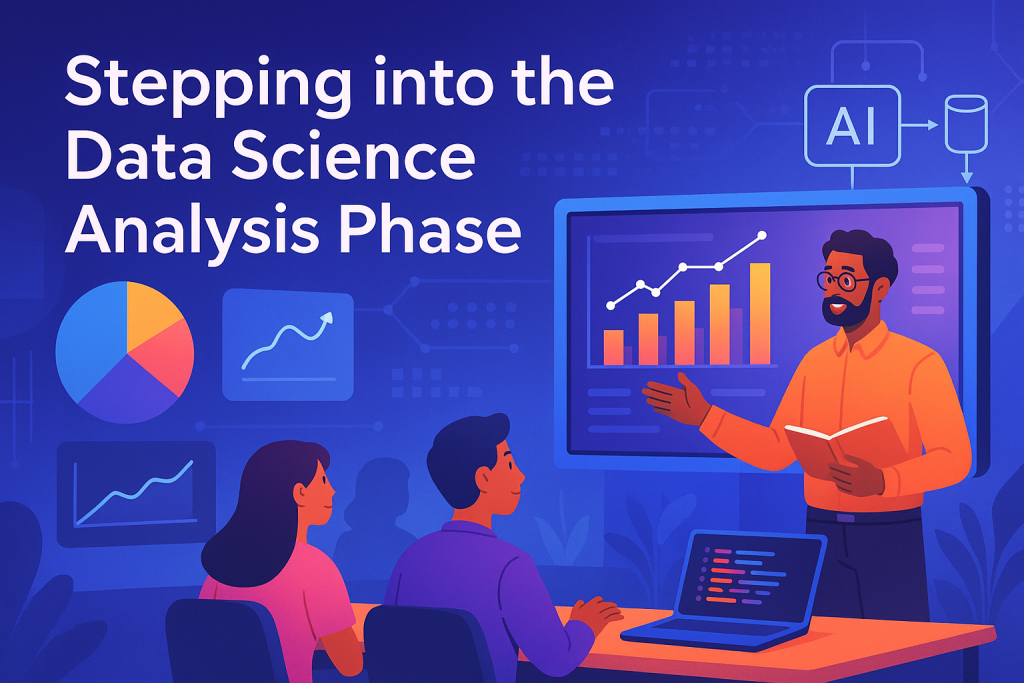
Mastering Classification Algorithms in Python: Logistic Regression, Decision Trees, and Ensemble Methods
Imagine you have a pile of data, and you need to sort it into clear groups—like spotting survivors on the Titanic or telling cats from non-cats in photos. That’s the power of classification algorithms. In this post, we’ll dive into the analysis phase of data science, where we build models using Python’s Scikit-learn library. You’ll learn key techniques, from basic ones to advanced ensembles, and see them in action on real data.
Introduction: Stepping into the Data Science Analysis Phase

The data science process starts with acquiring and preparing data. We covered those steps last time—gathering info and cleaning it up. Now, we hit the analyze part. Here, you create models that learn patterns from your data.
Classification models shine in this stage. They predict categories, like yes or no for survival. Scikit-learn packs tons of options, but we’ll focus on the most useful ones. These tools help you turn raw numbers into smart decisions.
Think of it as training a brain to spot differences. By the end, you’ll know how to implement them step by step.
Review of the Data Science Process
Data science flows through key activities: acquire, prepare, analyze, report, and act. We grabbed data, fixed errors, and explored it before. Now, analysis means building and testing models.
This phase turns prep work into predictions. You feed cleaned data to algorithms. They spot rules to classify new info.
Skip this, and your project stalls. It’s where magic happens—models that guess right.
Classification Model Fundamentals
Classification outputs a label, like “cat” or “survived.” No numbers here, just groups. Scikit-learn has dozens of algorithms, but popularity rules.
We’ll cover three to four stars: logistic regression, decision trees, and ensembles. Each fits different needs. Hands-on code comes later, so you see them work.
These methods handle binary choices best, like pass or fail. They scale to more classes too.
Understanding Logistic Regression: Beyond the Name
Logistic regression sounds like it predicts numbers, but it sorts categories. That name trips people up. It’s not like linear regression for scores; it’s for yes/no calls.
You start with a line to guess values. Then tweak it for classes. The trick? A special function squishes outputs to 0-1 range.
Regression vs. Classification Output Ranges
Linear regression spits out any number, from negative infinity to positive. Say, predict a player’s score: 0 to 200 runs. It fits endless possibilities.
Classification needs bounds. Logistic pins it between 0 and 1. 0 means no, 1 means yes. This turns guesses into probabilities.
Without this, predictions go wild. Logistic keeps them tidy for decisions.
The Role of the Sigmoid (Logistic) Function
The sigmoid function maps any input to 0-1. Its formula: 1 divided by (1 + e to the power of -z), where z is your linear output. Simple yet genius.
Feed it a huge negative number? Output nears 0. Positive giant? Hits 1. Zero gives 0.5—right in the middle.
This curve, called an S-shape, smooths edges. It acts like a gate, turning raw math into class odds.
Establishing the Classification Threshold
Pick a cutoff, often 0.5. Above it? Class 1, like “cat.” Below? Class 0, “non-cat.”
Closer to 1 means high confidence. Near 0? Strong no. A 0.7 says mostly cat, with some doubt.
This threshold splits worlds. Adjust it for balance, like favoring safety in medicine.
Decision Trees: Flowcharting Data Decisions
Decision trees mimic choices, like a flowchart. Each branch asks about a feature. You follow paths to a final call.
Not like forest trees—these are data structures in code. Roots split first, leaves end it. Easy to picture and explain.
They work on structured data, like tables of numbers and labels.
Tree Structure and Terminology
Start at the root node—your first question, say, “Are ears pointy?” Branches go yes or no. Decision nodes ask more.
Leaf nodes give answers: all cats here, all non-cats there. No more splits.
Nodes connect via branches. The whole thing looks like an upside-down tree.
The Learning Process: Maximizing Data Purity
Training picks the best feature to split data. Goal: pure groups, where most items match one class.
Mixed bag at top—half cats, half dogs. Split on ears: pointy side gets mostly cats. Purity rises.
Repeat at each node. Math finds the top splitter. Deeper trees mean finer splits.
Measuring Purity: Gini and Information Gain
Gini impurity checks mix level. Low Gini means pure—ideal for leaves. High? Needs better split.
Information gain measures chaos drop after split. More gain, better choice. Both guide feature picks.
Research these for depth. They’re key to smart trees. Try coding them to see gains.
Ensemble Methods: Leveraging Multiple Models
One tree can overfit or miss spots. Ensembles team up trees for better calls. They cut errors and boost strength.
Built on decision trees, these shine in tough tasks. Random forest and gradient boosting lead the pack.
Use them when single models falter. They handle noise well.
Random Forest Algorithm: Parallel Aggregation
Random forest grows many trees side by side. Each sees different data slices. Vote at end for the win.
Bootstrap samples with replacement—pick rows randomly, repeats okay. Vary features too, for unique trees.
Say 100 trees: 60 say cat, 40 no. Majority rules: cat. This averages out flaws.
Research sampling with replacement. It’s the secret to diversity.
Gradient Boosting: Sequential Error Correction
Boosting chains trees one after another. First tree guesses. Next fixes its mistakes.
Each adds tweaks, shrinking errors step by step. End result: sharp predictions.
It’s slower than parallel forests—trains in order. But accuracy often tops charts.
In practice, ask: how compute-heavy? Clients care about server costs.
Practical Implementation with Scikit-learn (Titanic Dataset Example)
Time to code. We use Titanic data—passenger details to predict survival. Structured, clean, perfect for practice.
Load it, encode categories to numbers, scale features. Now it’s model-ready.
Scikit-learn makes it simple. Import, fit, predict—done.
Data Preparation Checklist
Grab the dataset. Check shapes: features in X, target in y (survived column).
Scale with StandardScaler. It centers data around zero, helps models converge fast.
No strings left—all numeric. Missing values filled earlier.
Splitting Data for Robust Evaluation
Use train_test_split. Set test_size=0.2—80% train, 20% test. Random_state=42 for same splits always.
Get X_train, X_test, y_train, y_test. Train learns patterns; test checks unseen performance.
This avoids cheating—model can’t peek at answers.
Training and Evaluating Core Classifiers
Import LogisticRegression. Create instance, fit on train data. Predict on test, score accuracy.
On Titanic: 82.2% right. Solid start.
DecisionTreeClassifier next. Fit, predict—79.2%. Simple but wiggly.
RandomForestClassifier: 83.1%. Forest power shows.
GradientBoostingClassifier hits highest, around 83%. Sequential smarts win here.
All use same flow: fit(X_train, y_train), predict(X_test), accuracy_score(y_test, predictions).
Beyond Accuracy: The Need for Comprehensive Evaluation
Accuracy tells correct guesses percentage. Easy metric, but not always enough. Titanic scores look good, but dig deeper.
Gradient boosting led in our run. Random forest close behind. Trees alone lagged a bit.
Comparing Model Results
Logistic: 82.2%—quick, steady. Decision tree: 79.2%—interpretable but overfits easy.
Random forest: 83.1%—robust from crowds. Boosting: top dog, fixes flaws in chain.
Small dataset helped quick trains. Bigger ones test true strength.
Limitations of Accuracy as a Metric
Accuracy fools on imbalanced data. Say 90% non-survivors—guess no always, score 90%. Useless.
It ignores false alarms or misses. Precision, recall, F1 better for real life.
We’ll cover these soon. Don’t rely on one number alone.
Conclusion: Analysis Phase Accomplished
We journeyed from data prep to model magic. Logistic regression bends lines to probabilities via sigmoid. Decision trees branch on purity, guided by Gini or gain.
Ensembles amp it up—forests vote in parallel, boosting chains errors. Hands-on with Titanic showed scores: 79-83%, proving their worth.
Key tips: Use sigmoid for logistic bounds. Split smart for pure leaves. Bootstrap for forest variety. Always question compute costs.
Next, tackle regression for number predictions. Dive into full metrics too. Grab your notebook—try these on your data. Build models that matter.



